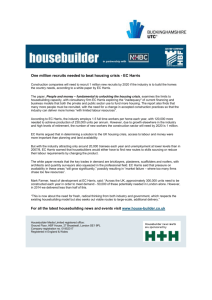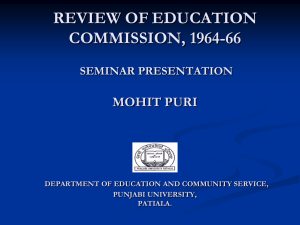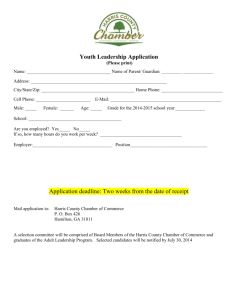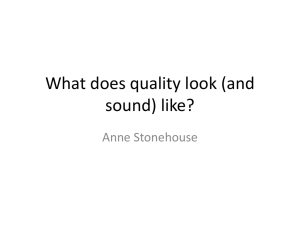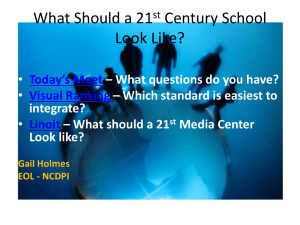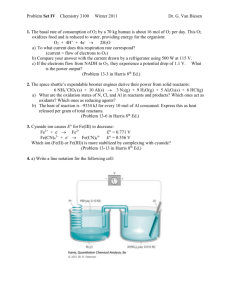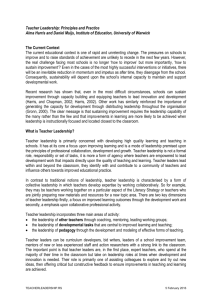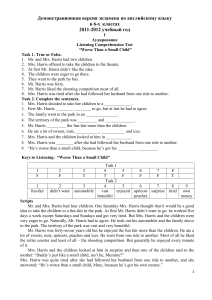A critical realist perspective of leadership practices
advertisement
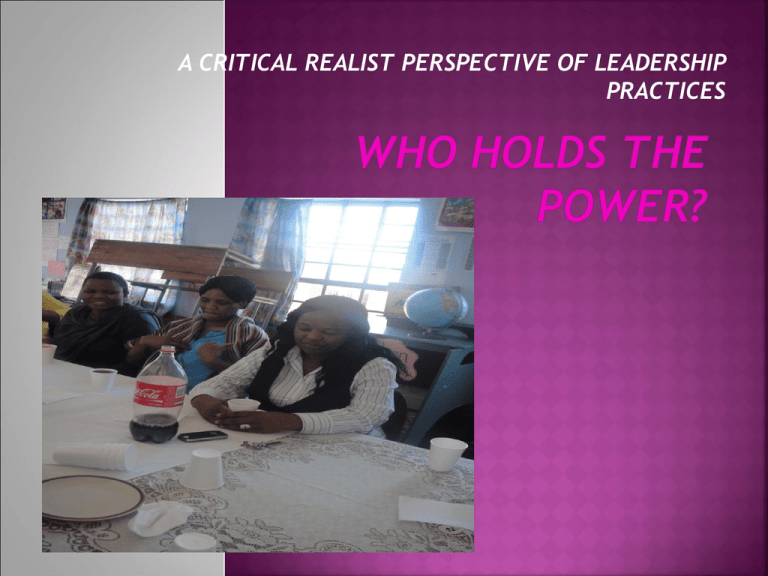
A CRITICAL REALIST PERSPECTIVE OF LEADERSHIP PRACTICES There are many leaders, not just one. Leadership is distributed. It resides not solely in the individual at the top, but in every person at every level who in one way or another, acts as a leader Principal Educators • • • • • • Field of Ed Leadership & Management South Africa -1994 > transform Policymakers faith in ed. Task Team Report (1996) legacy of apartheid > collective efforts > Boost morale. Despite the promulgation of sophisticated policies Leadership collective.... • • • • • • Field of Ed Leadership & Management South Africa -1994 > transform Policymakers faith in ed. Task Team Report (1996) legacy of apartheid > collective efforts > Boost morale. Despite the promulgation of sophisticated policies Leadership collective.... LITERATURE REVIEW PRINCIPAL KEY Ash & Persall (2000), Harris & L Lambert (2003), Murphy, (2009) Kotter (2000), Spillane, Camburn and Pareja (2000) ENTRENCHED BELIEFS AND IDEOLOGIES Katzenmeyer& Moller, (2001), Harris & Lambert (2003), Harris, (2008). Grant (2010), Singh, (2007), Moonsamy, (2010), Nene (2010) UNDERSTANDING THE CONCEPT OF LEADERSHIP & MANAGEMENT •Headship •Great man theory •Management more status •Leadership & Management linked Grant (2010) Davidoff & Lazarus(1994) Fullan (2009), Covey (2004), Singh (2007), Moonsamy (2010), Nene (2010) LITERATURE REVIEW DISTRIBUTED LEADERSHIP • Group activity • Fluid and emerging • Contours of expertise • Emergent • Leadership practice • Analytical tool Harris (2007), Davies (2009), Hargreaves (2007), Goleman (2002), Bennett et al (2003), Gronn (2000), Grant (2010), Prew (2007), van der Mescht & Tyala (2008), Bolden, Petrov & Gosling, 2009). TEACHER LEADERSHIP •Influence others > improved practice. Harris (2003),Harris & Lambert (2003), Hargreaves (1992), Katzenmeyer & Moller (2001), Grant (2010), Fullan & Hargreaves (1991). Social Realism- Margret Archer culture, structure, agency Distributed Leadership Theory Spillane (2006) Leader follower dualism Gunter’s graded categorisation dispersed authorised democratic Qualitative enquiry based on the philosophy of Critical Realism - Bhaskar Critical Realism - Layered ontology Empirical, Actual, Real World exists independent of our knowing Underlying mechanisms that give rise to what is happening at the level of the actual, empirical. Analytical dualism Level of the Empirical Level of the Actual Level of the real Case Study methodology Research sites and sampling Methods of Data collection Interview and focus group interview Observation Journal writing by primary participants Transect walk Document Analysis Critical Discourse Analysis Fairclough’s framework for analysing a social event Archers framework for analysing the level of the real to establish the underlying cultures, structures and agential influences that give rise to the underlying mechanisms that give rise to the events and experiences at the level of the actual and empirical respectively. DISCOURSES OF THE LINE FUNCTION - Organogram - Grade Controllers - Space created for L1 Educators to lead DISCOURSE - OF THE VISION AND MISSION OF THE SCHOOL Vision and Mission ingrained - All activities centred around the Vision and Mission Statement of the school - Educators encouraged to come up with innovations. DISCOURSE - OF ROLE PLAYED BY LEVEL 1 EDUCATORS in taking the lead Management monitors and controls - Space provided for L1 Educators to take on key leadership positions - Become corporate agents Underlying structures, mechanisms and agential influences Where does the power lay? What kind of power? Power over people or power over events Level 1 educators rise as Corporate agents How is distributed leadership enacted in practice? Recommendations for further research Through distributing leadership learners emerge as leaders

